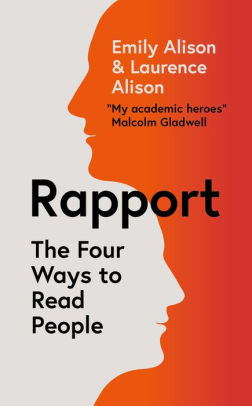What do you imagine when you imagine a terrorist being interrogated by an intelligence officer? The former getting roughed up? The latter yelling, banging his fists on the table, and demanding that the detainee talk?
My guests today argue that using force in this way to get what you want isn’t effective when you’re dealing with a terrorist, or, for that matter, a teenager. Their names are Laurence and Emily Alison, and they’re a married pair of forensic psychologists, as well as the authors of Rapport: The Four Ways to Read People. We begin our conversation with how through their extensive experience in training police, military, and security agencies like the FBI and CIA on how to conduct interrogations of criminals and terrorists, the Alisons discovered that literal and metaphorical browbeating was ineffective in inducing communication and cooperation, and that methods which built rapport were much more successful. We then discuss why building rapport in order to handle conflict, avoid arguments, and create connections is important not only in interrogation rooms but at work and at home. From there we dive into the four elements that make up this model of interpersonal communication, the last of which we demonstrate with some role play. We end our conversation with the idea of the “animal wheel,” in which different personality styles are represented by a mouse, lion, T-Rex, and monkey, and the importance of understanding your own interpersonal style and that of the person you’re engaging with, so you can predict how they’ll react, and adapt accordingly.
If reading this in an email, click the title of the post to listen to the show.
Show Highlights
What is rapport? How is it different from friendliness?What does fear do in a conversation or relationship?Why is rapport so important to our overall well-being?Can you learn rapport?How the pandemic has made our rapport skills worseWhat does honesty look like when trying to build rapport?What does autonomy have to do with rapport?How to deal with resistance The importance of reflection in the midst of conversation How to respond to the classic “Does this dress make me look fat?”Resources/People/Articles Mentioned in Podcast
How to Survive a Secret Syrian Terrorist Prison6 Signs for Sizing People UpThe Blue ZonesHow to Build Instant RapportHow to Design Conversations That MatterHow to Avoid Conversational NarcissismAoM’s conversation and small talk archivesOur Disembodied Selves and the Decline of EmpathyConnect With Laurence and Emily
Ground-Truth.co.uk
Listen to the Podcast! (And don’t forget to leave us a review!)





No comments:
Post a Comment